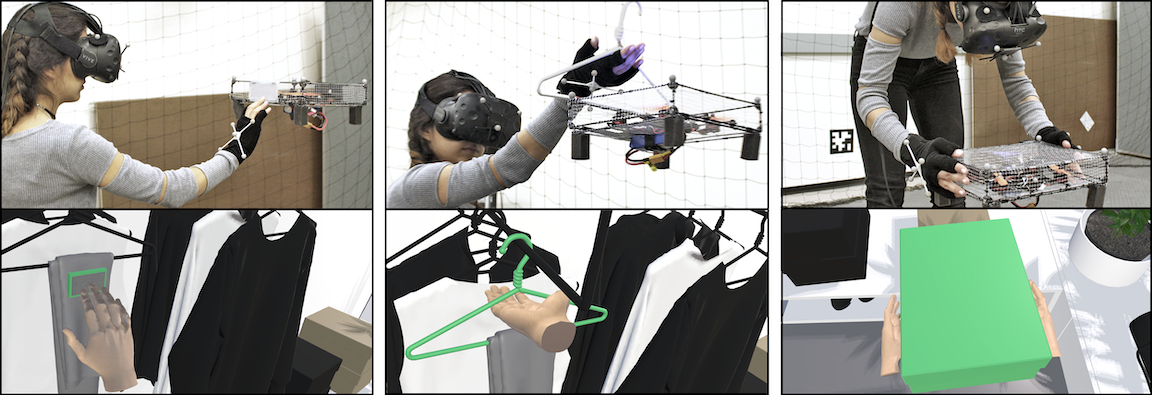
Haptic interactions using a quadcopter. Left: user touching fabrics attached to the quad for texture rendering. Middle: user picking up a physical hanger attached to the quad. Right: user picking up the turned off quad as a passive haptic device.
Quadcopters have been used as hovering encountered-type haptic devices in virtual reality. We suggest that quadcopters can facilitate rich haptic interactions beyond force feedback by appropriating physical objects and the environment. We present HoverHaptics, an autonomous safe-to-touch quadcopter and its integration with a virtual shopping experience. HoverHaptics highlights three affordances of quadcopters that enable these rich haptic interactions: (1) dynamic positioning of passive haptics, (2) texture mapping, and (3) animating passive props. We identify inherent challenges of hovering encountered-type haptic devices, such as their limited speed, inadequate control accuracy, and safety concerns. We then detail our approach for tackling these challenges, including the use of display techniques, visuo-haptic illusions, and collision avoidance. We conclude by describing a preliminary study to better understand the subjective user experience when interacting with a quadcopter in virtual reality using these techniques.